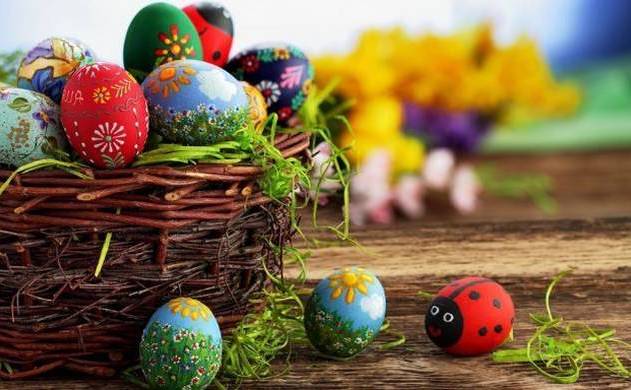The Easter customs of Mani

Easter in Mani is a unique experience where visitors can watch traditional customs and traditions that connect the past with the present in an atmosphere of deep reverence.
From Maundy Thursday, housewives knead with "seven-leaved dough", a Lambri (Easter) bread roll for each person in the house, godchildren, relatives and friends, even for those who are away abroad, while also preparing the traditional milk pie (the ultimate dessert for the holiday table). In the villages, they collect the eggs they will paint during Great Lent (they don't eat them then because they are fasting). In fact, in earlier years, before they were painted, they were taken to the church to be blessed by the priest. Also, on Maundy Thursday, they put an egg in the soil and take it out on Sunday. According to the shapes of the spots that have formed on the shell, empiricists predict the future.
Another characteristic custom of the residents of Mani is roasting the lamb on a spit on the day of Lambri (Easter). From early morning, the housewives light the fire outside the house with vines (for more deliciousness) while the kokoretsi and the sweets accompanying the wine are prepared next to it. For the lamb to be good (the "lambri" one"), they feed a separate ewe, the "manara". This lamb is allowed to drink a lot of milk from its mother to make it fat and tasty, and on Maundy Thursday, it is decorated with a red ribbon around its neck or marked on its back with red paint to distinguish itself.
On Monday after Easter (also known as the Day of the Cross or the Day of the Dead), in many villages of Mani, the custom of the Litany is observed, even to this day. The roots of this custom are lost in the depths of the centuries when, in ancient times, they honoured their dead heroes with piety. It is noteworthy that a similar tradition, headed by the first flag of the colonists of 1675 from Oitylo, is observed in the village of Carghjese (Carghjese) in Corsica by descendants of Mani people, accompanied by gunmen who shoot their guns in the streets. In the morning, the priest starts from the church, followed by the faithful, who go around the village chanting resurrection tropes and supplications. The procession ends at the cemetery, where the relatives of the dead await eagerly. On top of the flower-decorated graves, the censer, Easter buns and eggs are placed, while on the graves of the dead who passed away shortly before Easter, there are "doxaria" - buns the size of a large village bread. The priest then collects the buns and eggs from the graves, which are later given to the public in the form of an auction. The money collected is used for the needs of the church.



